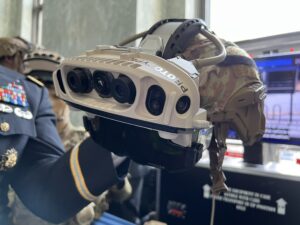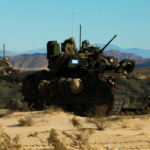
The Army’s acquisition chief on Tuesday said initial feedback on the new “1.2” upgraded version of Microsoft’s [MSFT] Integrated Visual Augmentation System (IVAS) has been positive, with the service working toward the next step in the rapid prototyping effort. Doug Bush, assistant secretary of the Army for acquisition, logistics and technology, cited IVAS 1.2’s new night vision camera component as an improvement that has “performed very well” during early testing. “But, we have to see. A camera can work really…

 By
By 











